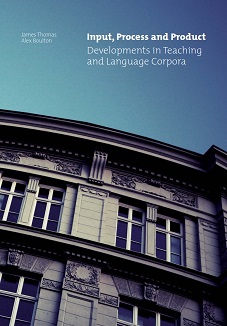Introduction: Corpus language input, corpus processes in learning, learner corpus product
Introduction: Corpus language input, corpus processes in learning, learner corpus product
Author(s): Alex Boulton, James Thomas
Subject(s): Syntax, Lexis, Semantics, Language acquisition
Published by: Masarykova univerzita nakladatelství
Keywords: language studies; corpus; language learning; data-driven learning; concordancing;
Summary/Abstract: Corpus linguistics is essentially concerned with describing language for linguistic research purposes, but language corpora (along with the associated tools and methodologies) have many different affordances and applications. In the fi eld of language teaching, corpus analysis is used to inform the content decisions of what to teach different learner populations in different contexts at different stages of development. This typically includes the application of frequency data in determining the sequence in which linguistic items should be introduced, in identifying key multiword units and a wide range of lexico-semantic patterns, and in predicting areas of potential diffi culty from learner corpora. This essentially indirect approach ( Römer 2011) to corpus data is taken by syllabus designers, materials writers, lexicographers and testers, though the results may be entirely invisible to the end user ( McCarthy 2004). However, teachers can also make use of corpora to answer their own questions about language, to test grammar ‘rules’ against real data, to find examples and help create materials for teaching and testing, among other things. Learner involvement need not be limited to teacher mediated uses, but can involve direct hands-on consultation, either for language learning or as a reference resource.
Book: Input, Process and Product: Developments in Teaching and Language Corpora
- Page Range: 7-34
- Page Count: 28
- Publication Year: 2012
- Language: English
- Content File-PDF

